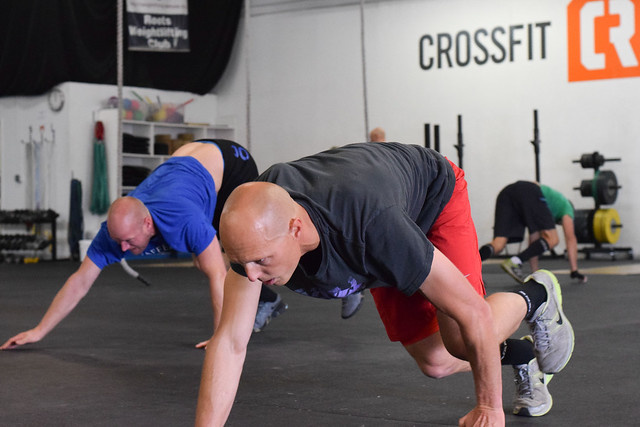Overhead squat 5-5-5 reps
Snatch balance 3-3-3 reps
Hang squat snatch 1-1-1 reps

In past blog posts we’ve talked about how our bodies are all about efficiency and how essentially, if there is something you don’t use, your body will get rid of it. Kate Galliett addresses this in her ebook “The Movement Manifesto”. She simplifies the process down to the phrase “signal, response”, and states that for every signal your body receives, it gives a response.
Signals can be from an internal stimulus, like you thinking to pull your shoulders back, or an external stimulus, like a heavy barbell in your hands. Every single moment of your life you’ve been feeding your body signals and it has been responding to those signals. Some signals are small, nearly unconscious to us, like reaching our head forward as we look at our iPhone. Hours, days, weeks and years of this same signal eventually lead to an equal response by our body of having a slightly forward head position, maybe even a rounded upper back, tight wrists and forearms, and the list goes on and on. Every single signal we’ve ever sent our body since the day we were born has received a response. The culmination of those responses have become the nagging shoulders, constant headaches, plantar fasciitis, tendonitis, etc etc etc. Age has even become the scapegoat for many of these responses.
All is not lost however, because it turns out that we can send our bodies signals for the responses that we DO want and it will respond in a manner to make us more efficient at that particular movement. An example would be how our bones grow to support external loads as we continue lifting weights.
Of course, it’s going to take time to reverse what has taken time to manifest, so the more frequently we can create the signals we want to get better at, the faster we will see the change. That means moving more during your day than just your workout. 1 hour a day is not going to override the 8 hours you sit at a desk, or car, or plane, or couch.
Work more moving into your daily routine, not exercise, just general movement. Walk somewhere, jump on something, squat down somewhere, do hip circles at the grocery store. Set an alarm on your phone or computer that goes off hourly to remind you to take 2 minutes out of your day for movement. Take the stairs, not to burn calories, but to live a more balanced life and start sending your body the signals that you want to move well and for a long time.
When you’re serious about learning a language, you practice it regularly. Movement is the language with which you write the story of every other activity, sport, and adventure you want to explore. To move well and feel great, you must practice, and expand, your movement language regularly. ~ Kate Galliett
